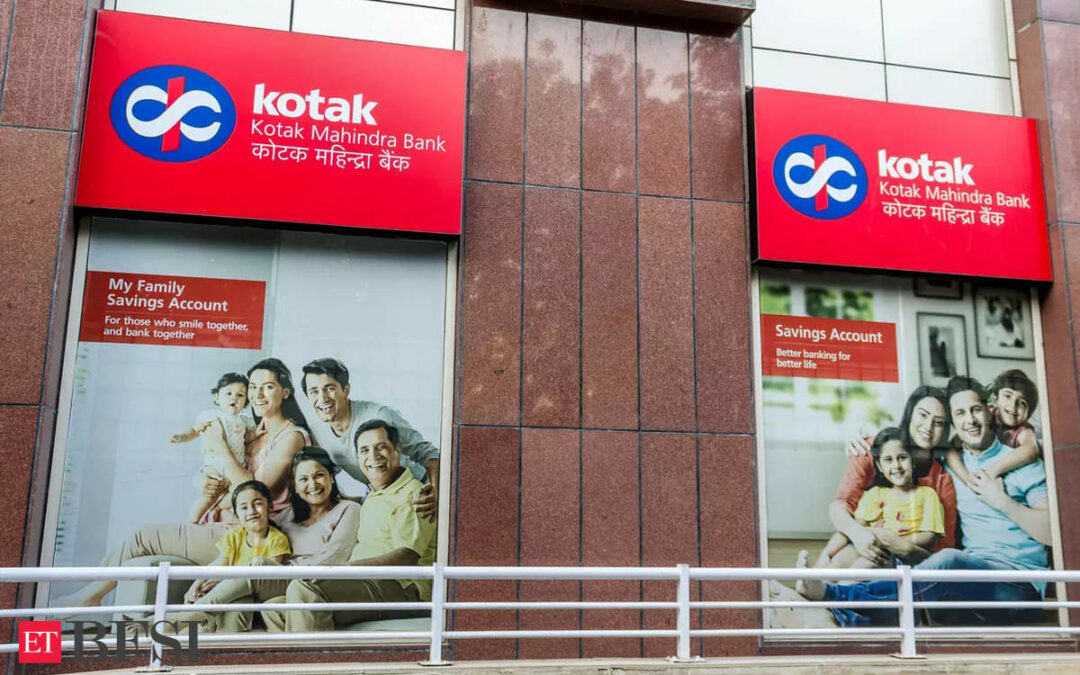With the Indian economy expected to see a growth rate of 7.2% in FY25, the firms in the MSME segment too would see good growth. This presents a great opportunity for banks, says Manish Kothari, Head, Commercial Banking, Kotak Mahindra Bank.
Banks would also have to face many challenges as many MSMEs are not registered, and small businesses don’t anyway have adequate access to the formal credit ecosystem. But, Kothari tells ET Online in an interview, it’s also an opportunity for banks to come up with out-of-the-box solutions to solve these challenges. Edited excerpts:
The Economic Times (ET): What is Kotak’s book size in the MSME lending space? What are the growth objectives that you have set for yourself?
Manish Kothari (MK): We straddle the entire segment across all turnover ranges through three business verticals — Consumer Bank WC (Secured), SME and Agri-SME in our Agri Division — with a book size that is upwards of Rs 75,000 crore. As this is an area of focus, we will continue to push for credit growth of 1.5-2x in this segment.
ET: What are the challenges and opportunities that lie ahead for Kotak and the industry?
MK: MSMEs contribute almost 30% to India’s GDP, nearly 40% to the manufacturing GVA and more than 45% to India’s exports. Hence, they form the bedrock for economic growth. With the economy poised to grow at a healthy rate of 7.2% in FY25, the firms in this segment too will see good growth. However, the challenge is that not more than 40% of the 6.3 crore MSME units have access to the formal credit ecosystem, possibly due to only 20% being registered with the GST system, poor availability of growth capital, etc.
In my view, the opportunity for banks like us is to come up with innovative solutions — maybe partially offset the risk by way of cash flow-backed lending, basis the linkage of these MSMEs with the corporate supply chain; financing against their receivables (now that GST data is readily available and accessible); partnering with fintechs through co-lending, etc.ET: MSMEs form a quarter of India’s economy and employ millions of people, but they still struggle for finances and loans. Your comments?
MK: The key pivot for us with respect to lending in the MSME segment has come through holistic banking relationships with the customer (both on asset and liability fronts), and out-of-the-box lending solutions. A holistic approach to the relationship helps us know the customer much better, which eventually lends to supporting the MSME customer through multiple products as well as in becoming more nimble in decision-making. This brings in more flexibility to our approach. Of course, a lot of the MSMEs of today are the mid-corporates and large corporates of tomorrow. Hence, a relationship approach helps us grow them and grow with them.
ET: What are the new segments and geographies that you are targeting?
MK: As a bank, we are sector-agnostic with respect to our MSME lending as we believe that there are good businesses in every segment. Of course, some segments have greater tailwinds based on what is growing faster in the economy (say, infrastructure, healthcare, segments supported by government subsidies). So one tends to grow faster in those segments. However, our focus is to grow, both in terms of covering additional locations as well as by going deeper into business clusters.











